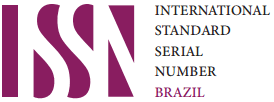Prevalence and correlates of problematic smartphone usage in undergraduate students in health courses
DOI:
https://doi.org/10.25118/2763-9037.2021.v11.56Keywords:
Mental health, smartphone, addictive behavior, mood disorder, attention deficit, hyperactivityAbstract
Introduction: Young people consider smartphones as essential because they offer an infinite range of services and operate many different functions, enabling them to substitute many different devices. Problematic smartphone use has both physical and psychological implications. Objective: To establish the prevalence of problematic smartphone use (PSU) among undergraduate students at a private medical school in Belo Horizonte, MG, Brazil, and to correlate this behavior with mood disorders, sleep disorders, cognitive disorders, and attention deficit hyperactivity disorder. Method: The sample was assessed using the Hospital Anxiety and Depression Scale (HADS), the Epworth Somnolence Scale, the Smartphone Dependence Inventory, the Adult Self-Report Scale (ASRS-18), and the Cognitive Failure Questionnaire. Results: A total of 156 volunteers participated in the study, the majority of whom were medical students. The prevalence of PSU was 52.5% and was statistically correlated with symptoms of attention deficit and hyperactivity, mood disorders, and sleep disorders. The prevalence rates of symptoms of depression and anxiety were 66.6 and 82.69%, respectively. Conclusions: We conclude that PSU is a prevalent phenomenon among students studying medicine and related areas and can be associated with somnolence, affective disorders, and symptoms of attention deficit and hyperactivity.
Downloads
Metrics
References
Gutiérrez-Rentería ME, Santana-Villegas JC, Pérez-Ayala M. Smartphone: usos y gratificaciones de los jóvenes en México en 2015. Palabra Clave. 2015;20:47-68. https://doi.org/10.5294/pacla.2017.20.1.3
Medrano JL, Rosales FL, Loving RD. Conducta adictiva a las redes sociales y su relación con el uso problemático del móvil. Acta Investig Psicol. 2017;7:2832-38. https://doi.org/10.1016/j.aipprr.2017.11.001
Ruiz-Palmero J, Sánchez-Rodríguez J, Trujillo Torres JM. Utilización de Internet y dependencia a teléfonos móviles en adolescentes. Rev Latinoam Cienc Soc Niñez Juv. 2016;14:1357-69.
Borges AP, Joia LA. Executivos e smartphones: uma relação ambígua e paradoxal. Organ Soc. 2013;20:585-602. https://doi.org/10.1590/S1984-92302013000400002
Youn H, Lee SI, Lee SH, Kim JY, Kim JH, Park EJ, et al. Exploring the differences between adolescents' and parents' ratings on adolescents' smartphone addiction. J Korean Med Sci. 2018;33:e347. https://doi.org/10.3346/jkms.2018.33.e347 PMid:30584419 PMCid:PMC6300655
Lee EJ, Kim HS. Gender differences in smartphone addiction behaviors associated with parent-child bonding, parent-child communication, and parental mediation among Korean elementar school students. J Addict Nurs. 2018;29:244-54.
Ihm J. Social implications of children's smartphone addiction: the role of support networks and social engagement. J Behav Addict. 2018;7:473-81. https://doi.org/10.1556/2006.7.2018.48 PMid:29865865 PMCid:PMC6174576
Rod NH, Dissing AS, Clark A, Gerds TA, Lund R. Overnight smartphone use: a new public health challenge? A novel study design based on high-resolution smartphone data. PloS One. 2018;13:e0204811.
Chen PL, Pai CW. Pedestrian smartphone overuse and inattentional blindness: an observational study in Taipei, Taiwan. BMC Public Health. 2018;18:1342. https://doi.org/10.1186/s12889-018-6163-5 PMid:30595132 PMCid:PMC6311895
Fowler J, Noyes J. A study of the health implications of mobile phone use in 8-14s. Dyna (Medellin, Colombia). 2017;84:228-33. https://doi.org/10.15446/dyna.v84n200.62156
Namwongsa S, Puntumetakul R, Neubert MS, Boucaut R. Factors associated with neck disorders among university student smartphone users. Work. 2018;61:367-78. https://doi.org/10.3233/WOR-182819 PMid:30373996
Queiroz LB, Lourenço B, Silva LE, Lourenço DM, Silva CA. Dor musculoesquelética e síndromes musculoesqueléticas em adolescentes relacionadas a dispositivos eletrônicos. J Pediatr (Rio J). 2018;94:673-9. https://doi.org/10.1136/postgradmedj-2018-136145 PMid:30554170
Fırat S, Gül H, Sertçelik M, Gül A, Gürel Y, Kılıç BG. The relationship between problematic smartphone use and psychiatric symptoms among adolescents who applied to psychiatry clinics. Psychiatry Res. 18;270:97-103. https://doi.org/10.1016/j.psychres.2018.09.015 PMid:30245382
Knuth BS, da Silva RA, Oses JP, Radtke VA, Cocco RA, Jansen K. Mental disorders among health workers in Brazil. Cien Saude Colet. 2015;20:2481-8. https://doi.org/10.1590/1413-81232015208.05062014 PMid:26221813
Rotenstein LS, Ramos MA, Torre M, Segal JB, Peluso MJ, Guille C, et al. Prevalence of depression, depressive symptoms, and suicidal ideation among medical students: a systematic review and meta analysis. JAMA. 2016;316:2214-36. https://doi.org/10.1001/jama.2016.17324 PMid:27923088 PMCid:PMC5613659
Tabalipa FD, de Souza MF, Pfützenreuter G, Lima VC, Traebert E, Traebert J. Prevalence of anxiety and depression among medical students. Rev. Bras. Educ. Med. 2015;39:388-94. https://doi.org/10.1590/1981-52712015v39n3e02662014
Faro A. Análise fatorial confirmatória e normatização da Hospital Anxiety and Depression Scale (HADS). Psic Teor Pesq. 2015;31:349-53. https://doi.org/10.1590/0102-37722015032072349353
Bertolazi AN, Fagondes SC, Hoff LS, Pedro VD, Menna Barreto SS, Johns MW. Validação da escala de sonolência de Epworth em português para uso no Brasil. J Bras Pneumol. 2009;35:877-83. https://doi.org/10.1590/S1806-37132009000900009 PMid:19820814
Khoury JM. Tradução, adaptação cultural e validação de uma versão brasileira do questionário Smartphone Addiction Inventory (SPAI) para o rastreamento de dependência de smartphone. (thesis). Belo Horizonte: Universidade Federal de Minas Gerais; 2016.
Mattos P, Segenreich D, Saboya E, Louzã M, Dias G, Romano M. Adaptação transcultural para o português da escala Adult Self-Report Scale para avaliação do transtorno de déficit de atenção/hiperatividade (TDAH) em adultos. Arch. Clin. Psychiatry (São Paulo). 2006;33:188-94. https://doi.org/10.1590/S0101-60832006000400004
de Paula JJ, Costa DS, Miranda DM, Romano-Silva MA. Brazilian version of the Cognitive Failures Questionnaire (CFQ): cross-cultural adaptation and evidence of validity and reliability. Debates.2018;40:312-5.
Sohn SY, Rees P, Wildridge B, Kalk NJ, Carter B. Prevalence of problematic smartphone usage and associated mental health outcomes amongst children and young people: a systematic review, meta-analysis and GRADE of the evidence. BMC Psychiatry. 2019;19:356.
Khoury JM, das Neves MD, Roque MA, de Freitas AA, da Costa MR, Garcia FD. Smartphone and Facebook addictions share common risk and prognostic factors in a sample of undergraduate students. Trends Psychiatry Psychother. 2019;41:358-68. https://doi.org/10.1590/2237-6089-2018-0069 PMid:31967196
Jacob T, Itzchak EB, Raz O. Stress among healthcare students-a cross disciplinary perspective. Physiother Theory Pract. 2013;29:401-12. https://doi.org/10.3109/09593985.2012.734011 PMid:23094641
Elhai JD, Tiamiyu M, Weeks J. Depression and social anxiety in relation to problematic smartphone use. Internet Res. 2018;28:315-32. https://doi.org/10.1108/IntR-01-2017-0019
Extremera N, Quintana-Orts C, Sánchez Álvarez N, Rey L. The role of cognitive emotion regulation strategies on problematic smartphone use: comparison between problematic and non problematic adolescent users. Int J Environ Res Public Health. 2019;16:3142. https://doi.org/10.3390/ijerph16173142 PMid:31466410 PMCid:PMC6747355
Pinto NA, Cavestro JM, Fereira W. Prevalência de transtorno de ansiedade generalizada em estudantes de medicina. Rev Interdiscip Ciencias Med. 2018;2:36-43.
Carvalho LF, Sette CP, Ferrari BL. Problematic smartphone use relationship with pathological personality traits: systematic review and meta analysis. Cyberpsychology (Brno). 2018;12:Article 5. https://doi.org/10.5817/CP2018-3-5
Montagni I, Guichard E, Kurth T. Association of screen time with self-perceived attention problems and hyperactivity levels in French students: a cross-sectional study. BMJ Open. 2016;6:e009089.
Dey M, Studer J, Schaub MP, Gmel G, Ebert DD, Lee JY, et al. Problematic smartphone use in young Swiss men: Its association with problematic substance use and risk factors derived from the pathway model. J Behav Addict. 2019;8:326-34. https://doi.org/10.1556/2006.8.2019.17 PMid:31079472 PMCid:PMC7044551
Kumar VA, Chandrasekaran V, Brahadeeswari H. Prevalence of smartphone addiction and its effects on sleep quality: a cross-sectional study among medical students. Ind Psychiatry J. 2019;28:82-5. https://doi.org/10.4103/ipj.ipj_56_19 PMid:31879452 PMCid:PMC6929238
Oh JH, Yoo H, Park HK, Do YR. Analysis of circadian properties and healthy levels of blue light from smartphones at night. Sci Rep. 2015;5:11325. https://doi.org/10.1038/srep11325 PMid:26085126 PMCid:PMC4471664
Hadlington LJ. Cognitive failures in daily life: exploring the link with Internet addiction and problematic mobile phone use. Comput Human Behav. 2015;51:75-81. https://doi.org/10.1016/j.chb.2015.04.036

Published
How to Cite
Conference Proceedings Volume
Section
License
Copyright (c) 2021 Jonas Jardim de Paula, Gabriel Acácio Pena de Menezes, João Pedro Paz Takeuchi , Luciana Alves Silveira Monteiro

This work is licensed under a Creative Commons Attribution-NonCommercial 4.0 International License.
Debates em Psiquiatria allows the author (s) to keep their copyrights unrestricted. Allows the author (s) to retain their publication rights without restriction. Authors should ensure that the article is an original work without fabrication, fraud or plagiarism; does not infringe any copyright or right of ownership of any third party. Authors should also ensure that each one complies with the authorship requirements as recommended by the ICMJE and understand that if the article or part of it is flawed or fraudulent, each author shares responsibility.
Attribution-NonCommercial 4.0 International (CC BY-NC 4.0) - Debates em Psiquiatria is governed by the licencse CC-By-NC
You are free to:
- Share — copy and redistribute the material in any medium or format
- Adapt — remix, transform, and build upon the material
The licensor cannot revoke these freedoms as long as you follow the license terms. Under the following terms:
- Attribution — You must give appropriate credit, provide a link to the license, and indicate if changes were made. You may do so in any reasonable manner, but not in any way that suggests the licensor endorses you or your use.
- NonCommercial — You may not use the material for commercial purposes.
No additional restrictions — You may not apply legal terms or technological measures that legally restrict others from doing anything the license permits.





























